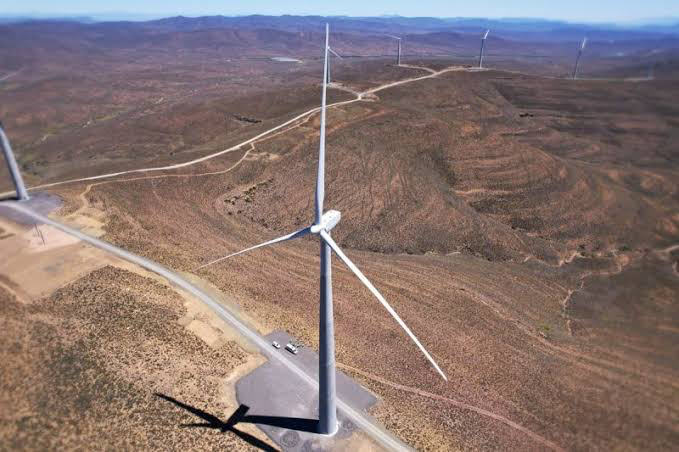Seriti Green, a subsidiary of Seriti Resources, is advancing the Ummbila Emoyeni project, Mpumalanga’s first wind farm. This landmark project is also South Africa’s first majority black-owned wind farm.
On July 17, Seriti unveiled the project to the media and key stakeholders, showcasing its commitment to the country’s renewable energy transition.
The R4.8-billion project is Seriti Resources’ first major renewable energy initiative since acquiring Windlab and launching Seriti Green last year. Seriti, known for its coal mining operations, is diversifying its energy portfolio to include sustainable options. This aligns with South Africa’s broader goals for a just energy transition (JET).
Mike Teke, CEO of Seriti Resources and chairperson of Seriti Green, emphasized that the company will continue to develop its coal assets while expanding into green energy. The transition from coal needs to be gradual and sustainable, he said.
The Ummbila Emoyeni project is expected to be fully operational by 2027. It will supply electricity to 75% of Seriti’s operations and surrounding communities through a wheeling arrangement. The first phase of the 155 MW wind energy facility is underway and will be completed by mid-2026.
This initial 155 MW project is part of a larger 900 MW initiative that Seriti Green aims to complete over the next three years at a cost of R25 billion. The project will include 750 MW of wind power and 150 MW of solar power, with an additional 800 MWh of storage capacity.
About R1.5 billion of the R4.8 billion cost for Phase 1 will be allocated to grid infrastructure. Half of this will be owned and maintained by Seriti Green, with the rest integrated into Eskom’s national grid.
Peter Venn, CEO of Seriti Green, noted that all project equity comes from Seriti shareholders RMB and Standard Bank. He highlighted the synergy between Seriti’s coal and renewable businesses. “It’s not about either coal or renewables, but both,” he said.
Venn also pointed out that Seriti Resources relinquished the mineral rights over the project’s land for its construction. The project uses mine-impacted water from Seriti’s New Denmark colliery, exemplifying a circular economy approach. Notably, 10% of Seriti Green’s workforce hails from the coal sector.
The local sourcing of equipment and exploring options for local component manufacturing are key aspects of the project. It also includes an on-site training simulator. Seriti Green is focused on cross-skilling and upskilling employees from the coal sector and surrounding communities. This is crucial, as the wind farm will not employ as many people as a coal operation.
The project aims to create sustainable jobs in Mpumalanga, anticipating future coal power station shutdowns. Seriti plans to develop around 3 GW of projects in the area over the next decade, making this wind farm a catalyst for regional job creation.
Community and stakeholder engagement has been a priority since 2021 before construction began. A portal launched in 2022 helps small and medium-sized enterprises and job seekers prepare to work on the project. About 6,800 people have registered for jobs through this hub.
Venn praised the local government’s support and proactive approach to the project. He noted that extensive environmental studies were conducted to minimize land use, ensuring environmental protection.
The project currently boasts about 25% local components, potentially increasing to 50%-60% with sufficient investment and policy support. This commitment to local sourcing and sustainability underscores Seriti Green’s role in South Africa’s renewable energy future.
Source: Mining Weekly



